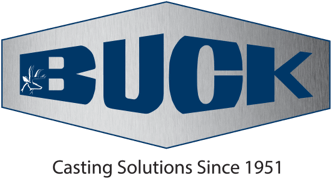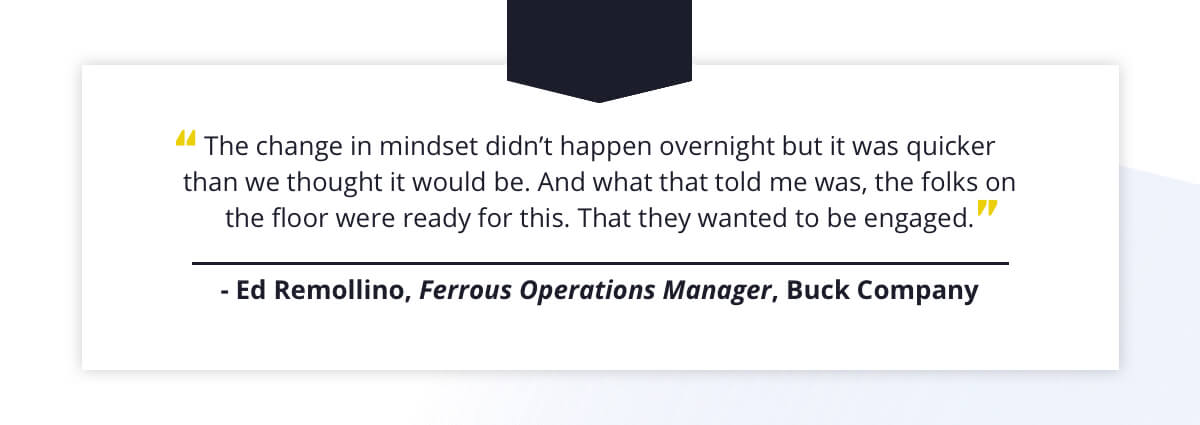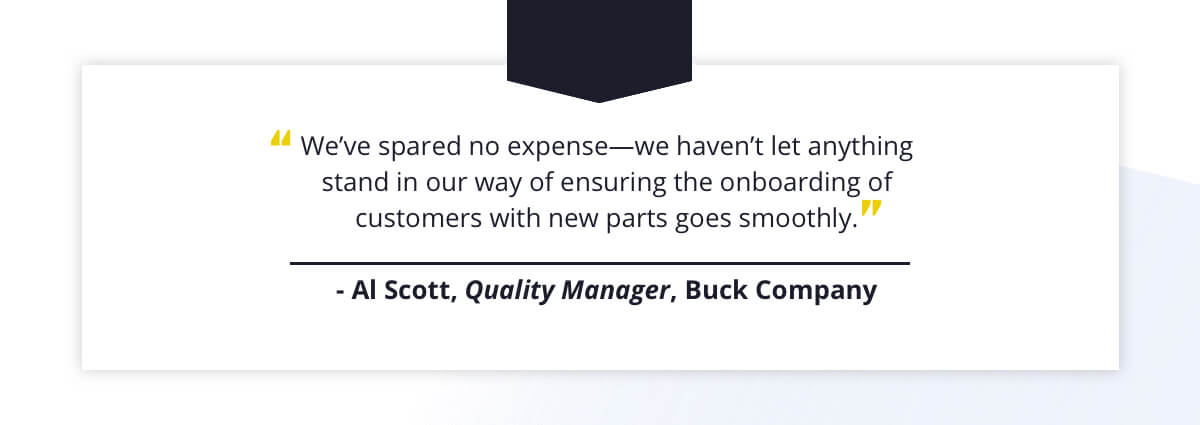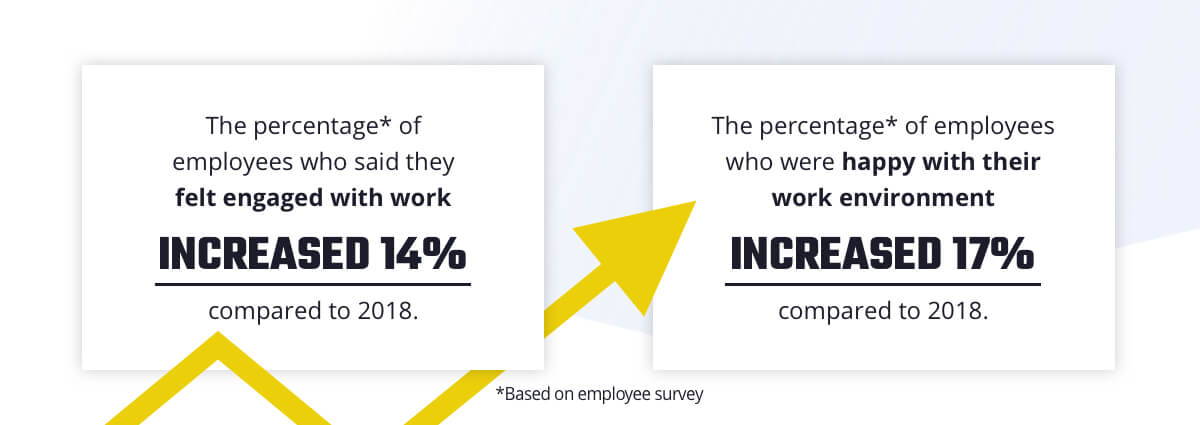Becoming a Foundry for the Future
Reprinted with permission from the April 2021 Issue of Modern Casting
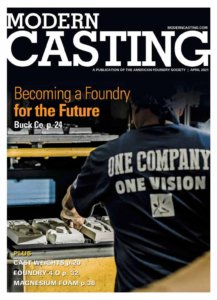 Visit AFS Corporate Member Buck Company’s website (www.buckcompany.com) and you’ll notice the first thing listed on its top menu is “Our Responsibility.” On this page, the Quarryville, Pennsylvania, metalcaster makes it clear the importance of the people who work there: “We’re committed to empowering our team members to grow professionally, delivering quality products to our customers, and giving back to our community.”
Visit AFS Corporate Member Buck Company’s website (www.buckcompany.com) and you’ll notice the first thing listed on its top menu is “Our Responsibility.” On this page, the Quarryville, Pennsylvania, metalcaster makes it clear the importance of the people who work there: “We’re committed to empowering our team members to grow professionally, delivering quality products to our customers, and giving back to our community.”
For two years, Buck has been working toward revamping its identity as a casting supplier and a Lancaster County employer, pushing to become a foundry featuring modern technologies along with a modern management approach. With the company willing to invest in its future and an executive team collaborating to achieve growth and sustainability, the ferrous and nonferrous foundry emerged from the COVID-19 pandemic strong, vibrant and ready for more.
Buck’s management team consists of four executives: Jim Kundratic, executive vice president, Dennis Basham, senior vice president of operations, Glenn Muzzy, vice president of sales, and Michael Ferreira, vice president of accounting.
In order to steer the company into a business model for 2020 and beyond, the team wanted to take a different approach than had been taken in prior plans. Buck needed to become a place people wanted to work, and a company people wanted to do business with. That would require capital investment to provide a safe, clean, healthy and productive work environment as well as a management that establishes and maintains trust with employees and customers alike.
Al Scott’s been working in the metalcasting industry for decades, but his enthusiasm feels fresh. As quality manager at Buck Co., he’s witnessed a reenergized business that’s got him pumped about the direction of the company and the industry.
How did Buck get here—to a place where those nearing retirement feel assured, maybe even jazzed, for the next generations to make the company their own? Buck has set itself an ambitious five-year goal: Being named the Employer of Choice in Lancaster County.
“We all have a tall challenge ahead of us because I don’t know any of us that ever thought a foundry could be the employer of choice,” Kundratic said. “But if we continue to do the right things for people, I think we’re going to get there.”
Rewind back to August 2019, when Jim Kundratic was hired and joined Dennis Basham, who had been with Buck since January 2019. Together they decided to apply a different management and leadership culture than is typical in the foundry industry. Job No. 1 for the newly formed team was to build trust, starting with ensuring the safety of Buck employees.
To help with this vision Buck brought on Muzzy and Ferreira. The strength and motivation of the team is evident. “Each person on this team has a core strength or area of expertise,” Kundratic said.
Putting Employees First
Buck began building trust in two major ways. First, the leadership team committed to safety by making and meeting goals, and second, it implemented one-on-one meetings or “town hall” meetings, led by Basham, to open communication between leadership and staff.
The first step toward safety meant cleaning up the plant, and yes, applying some paint. The company also invested in new LED lighting to brighten the workspaces, a vacuum cleaning system and a new ventilation system. Automating high-risk areas like grinding and pouring also helped reduce injury. On top of that, upgraded and additional personal protective equipment (PPE) was provided to employees.
“Including extra PPE is always a real important part of a safety program,” said William Mozes, who joined Buck as health, safety and environment director in 2018. Safety is brought up in every start-of-shift team meeting. Near-miss accidents are discussed, or an employee may bring up a trip hazard they noticed. Those get fixed immediately, said Ed Remollino, ferrous operations manager and 16-year Buck veteran. If there are no hazards or near-misses to report, safety procedures are reviewed.
“I’m not driving it, the supervisors are. And the employees have buy-in because they can see their supervisors are doing it and that is so powerful,” said Mozes.
“We had a goal for 2020 to be half of the AFS industry average for recordable injuries. Well, we came in under a third of the average,” Muzzy said. “And we achieved zero lost time accidents for 453 days. Safety is an absolute commitment for us here.”
The Buck of today looks different than two years ago. New lighting, new dust collection system, new Disa Match molding line with automatic pressure pour system, new grinding cells and more have all been installed at Buck since January 2020. The safety record has markedly improved, delivery times are tighter, employee morale is up, and turnover is down.
“As for our customers, our safety performance helps a lot,” Muzzy said. “As much as saying, ‘take a look at our Disamatic with the autopour,’ our safety record is just as good of a selling point. That speaks to our stability and long-term sustainability.”
“Everyone had been just going through the motions, but what I see now when I walk around is a bunch of people that care about what they do,” said Robert Sturgill, layout technician at Buck. “They’re invested. It’s a team effort all around—it’s just a totally different atmosphere now.”
“The change in mindset didn’t happen overnight but it was quicker than we thought it would be,” said Remollino. “And what that told me was, the folks on the floor were ready for this. That they wanted to be engaged.”
Daily and weekly meetings—with supervisors and one-on-ones with Basham—have energized the workforce and improved engagement. And the biggest reason the meetings have made such a difference was pointed out by several staff members: when an idea, a problem, or a wish list item is brought up, leadership acts on them.
“Whenever [Basham] has these staff meetings, I’ll get a call that day or the day after, to talk about how to address an issue,” said Dustin Collins, plant engineer. “It’s pretty cool because I get to interact with the employees then, to see what I can do for them.”
“I had my quality department meeting this morning, and one of the people within the department suggested a program that could help with following through on auditing and corrective actions,” Scott said. “It’s great that they are willing to express that to us. And I am going to take that right to the executive team.”
The results of Basham’s commitment to the horizontal rather than the vertical leadership approach are lower turnover rates, fewer mistakes and a more engaged team.
Making the Investment
While some of the investment and upgrades have been to improve the work environment—like ventilation system, PPE equipment, and new lighting—others improve productivity and throughput.
The installation of new molding equipment coupled with automatic pouring in the ferrous foundry necessitated the addition of a larger capacity rotary media drum to handle the increased shakeout volume. Additionally, two new high-production, low-maintenance blast machines and a trim die press were added to help keep up in the ferrous finishing department. Short- term plans for ferrous finishing also include the addition of two more robotic grinding cells and expansion of trim die capabilities.
Buck also built a brand-new parts room, fully stocked with inventory that is cataloged in a digital database to support its revamped maintenance program. This allows maintenance personnel to better respond to unplanned downtime and schedule preventive maintenance, in addition to making adjustments requested by team members during their town hall meetings—such as building steps to replace ladders or rearranging a work area to reduce the amount of steps taken.
In the ferrous foundry, besides the new mold line and automated pouring, shakeout, and blast machines, Buck also upgraded the muller controls for the ductile iron molding with plans to upgrade the malleable iron muller this summer. On the nonferrous side, the muller has also been upgraded, along with the furnace, adding capacity.
Investments have continued into the quality, metallurgical and engineering departments ranging from new spectrometer, LECO, and sand lab equipment to a 3D arm scanner.
“We’ve spared no expense—we haven’t let anything stand in our way of ensuring the onboarding of customers with new parts goes smoothly,” Scott said. “We can work with new and existing customers from the modeling of parts, reverse engineering parts, communicating with them on their design, and creating an atmosphere where they feel comfortable knowing they’re dealing with a company that has the technology and the expertise to put it all together.
Buck Engineering Manager Josh Buelow offered an example of how the investment in engineering tools has paid off. A customer asked them to model the core prints off their casting model to 3D print the core. “It’s an unorthodox request, but it was a way for us to show our customer service. And once we got their positive feedback, it added validity to what we’re doing and the direction we’re taking.”
Seeing Results
When the Buck management team formed and started making their goals, a pandemic-caused recession was not part of the plans. On the downside, orders were down, like much of the rest of the industry. But on the plus side, the team now had more time to build a culture and enact their changes throughout the company. No one was traveling—so it was a perfect time to affirm the importance of employee meetings and put together a strategic plan to push Buck into the future.
“Just about everything—safety, quality, housekeeping, engineering is something we had in our plan at the beginning, or we are putting in our plan moving forward,” Kundratic said. “We are taking a systematic approach. We wanted to have cutting-edge technology and we wanted to have the best people in place in the facility.”
While business had slowed for a couple months, Ferreira and the management team worked on tracking production and creating a forecasting model to help the foundry streamline its scheduling and throughput. At the same time, team-member-suggested adjustments were implemented throughout the plant to make operations more efficient and safer.
“One of the most important things for us was to get our employees to trust us,” Basham said. “So in our townhall and one-to-one meetings, we listen, we write stuff down, and we act on it. Even if we couldn’t do something right away, we’d get back to them quickly and tell them. But I’m happy to see that we’ve pretty much completed everything we were asked to complete.”
For employees, seeing their ideas put into action put them on a fast track to engagement. Based on an employee survey at Buck Co., the percentage of employees who said they felt engaged with work improved 14% compared to 2018. In the survey, the percentage of employees who were happy with their work environment went up by 17%. Both employee engagement and work environment satisfaction are at an all-time high for the company. Combine that with an OSHA Recordable Injury Rate of 2.1 in 2020, and Buck has begun to attract attention from top-tier job candidates, Kundratic said.
“Our executive team is directly engaged with us. There’s a lot of activity going on, and they are holding us accountable to the goals we make, but at the same time, they’re right in there, helping us,” Mozes said.
A happy, plugged-in workforce has led to real change in quality, delivery and customer satisfaction as well. The evidence is everywhere. Throughput and uptime both have increased by 15% over 2018. And according to Muzzy, customer visits to the foundry have been one of the team’s best sales tools. One customer’s visit made them consider giving Buck the opportunity to take on work they are bringing back from China.
“During another customer tour, they told me they were re-evaluating the relationship they were contemplating with us because they could see we had a lot more to offer as a job shop than they realized,” Muzzy said. “They see how clean the facility is, how up-to-date the equipment is, how the employees react to them, and how the leadership team is committed to the company.”
View the article in the digital edition of April 2021 Modern Casting or, download a PDF version of the article.
